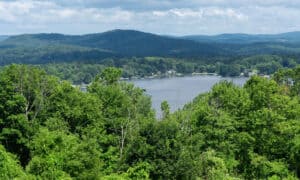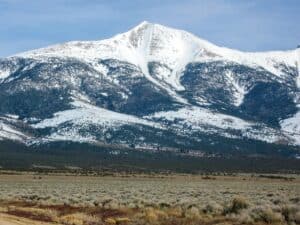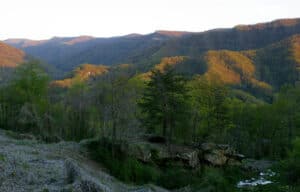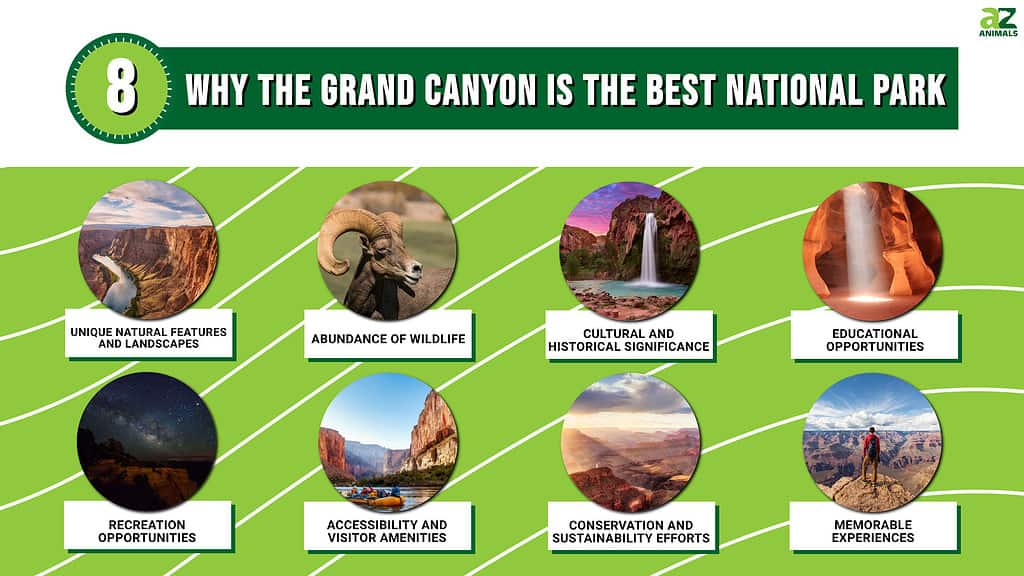
The Grand Canyon National Park is among the best national parks in the United States for numerous reasons. This article will explore the top 8 reasons that make it exceptional. Spanning across approximately 1.2 million acres, the Grand Canyon National Park is bursting with unique experiences and memories to be made.
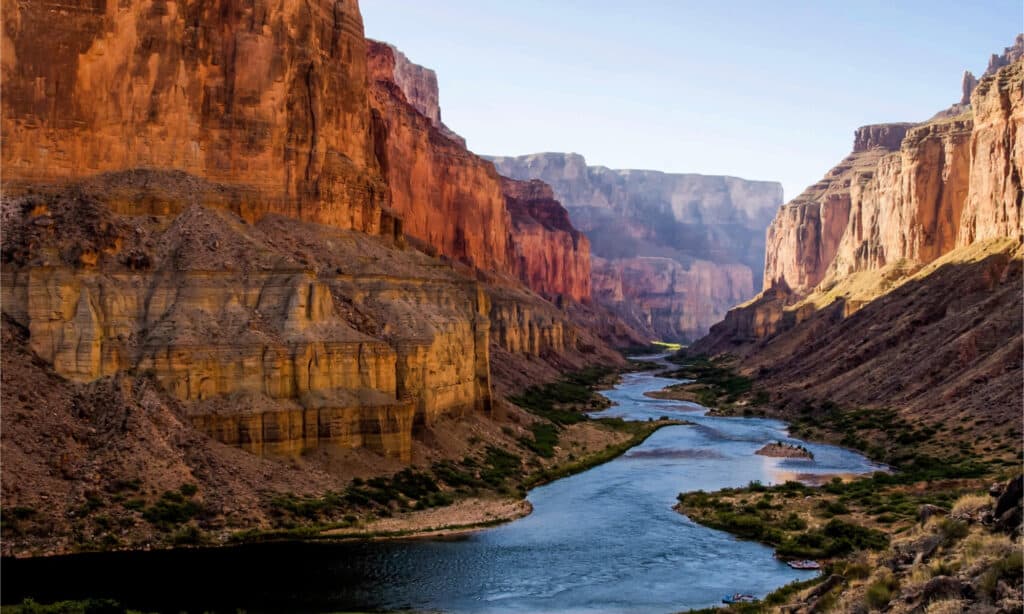
The Grand Canyon National Park is a popular destination in Arizona.
©Beth Ruggiero-York/Shutterstock.com
1. Unique Natural Features and Landscapes

Artists and nature enthusiasts marvel at the beauty of the Grand Canyon National Park.
©ipanacea/iStock via Getty Images
The first reason the Grand Canyon National Park is one of the best national parks in the United States is its unique natural features and otherworldly landscapes. Grand Canyon National Park stands as an awe-inspiring testament to the geological marvels that have shaped our planet over millions of years. It is nestled within the southwestern state of Arizona. The Grand Canyon National Park has rightfully earned its distinction as one of the finest national parks. The park’s unparalleled natural features and breathtaking landscapes have captivated countless visitors, researchers, and conservationists’ hearts and minds.
The Grand Canyon
As its name suggests, the Grand Canyon National Park’s most prominent feature is the Grand Canyon itself. It has been carved over many years by the mighty Colorado River. The canyon exposes billions of years of Earth’s geological history, laid raw in its vividly colored rock layers. The expansive canyon stretches over 277 miles in length. Its width is over 18 miles. Furthermore, its depths reach over a mile. It offers an unparalleled opportunity to witness the passage of time etched in rock. The park’s South Rim is especially renowned for providing panoramic views of the Grand Canyon. They are nothing short of awe-inspiring, making it a sought-after destination for artists and nature lovers. Moreover, the South Rim accounts for 90% of the visitors to the park.
Unique Ecosystems
Beyond its geological marvels, the Grand Canyon National Park also boasts diverse ecosystems across its landscapes, fostering a rich biodiversity. The park’s varied terrain supports a wide range of flora and fauna. Overall, the landscapes of the park are semi-arid. It consists of raised plateaus, structural basins, drainage systems, and numerous canyons. In addition to forested areas at higher elevations with ponderosa pines and desert basins with scrubland at lower elevations. The park’s biological diversity is an example of the importance of preserving and protecting natural landscapes worldwide.
Overall, the Grand Canyon National Park’s unique natural features and breathtaking landscapes make it stand out as one of the best national parks in the United States. Its unique natural features and diverse landscapes make it a must-see destination. Especially for those seeking to connect with the natural world and gain a deeper understanding of the region. As you gaze upon the grandeur of the Grand Canyon National Park, it becomes abundantly clear why this national park rightfully holds its place as a crown jewel among America’s protected natural areas.
2. Abundance of Wildlife
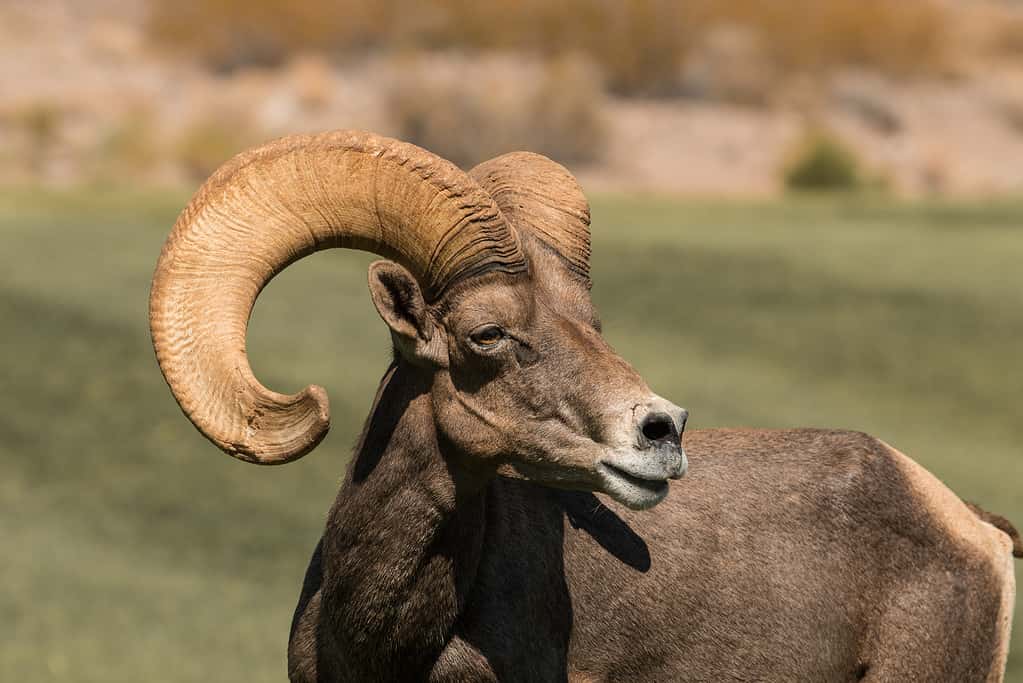
Desert bighorn sheep are common mammal species found in the Grand Canyon National Park.
©twildlife/iStock via Getty Images
The Grand Canyon National Park is unequivocally celebrated as one of the best national parks in the United States. This can be attributed, in part, to its remarkable desert wildlife. The park’s diverse ecosystems provide a sanctuary for an array of iconic and elusive species. Each contributes to its unparalleled beauty and complexity. There are over 90 species of mammals, 450 species of birds, and 60 species of reptiles and amphibians that reside here. In addition to over 25 species of fish and countless species of insects and invertebrates.
Birds
One cannot help but be entranced by the rarity of certain bird species. Such species include the California condor, southwestern willow flycatcher, Mexican spotted owl, western yellow-billed cuckoo, and the Yuma clapper rail. All of these birds are magnificent avian inhabitants of the park. The California condor has a wingspan stretching up to an impressive 9.5 feet. This critically endangered vulture holds the title of North America’s largest flying land bird. The California condor’s triumphant resurgence from the brink of extinction is a testament to the park’s commitment to conservation efforts. The park’s rugged cliffs and thermals provide an ideal habitat for these vultures. Their presence symbolizes the park’s role in preserving endangered species.
Mammals
Equally captivating are the various mammals that reside here. Desert bighorn sheep showcase their surefooted grace as they navigate the rugged terrain of the Grand Canyon National Park. These resilient mammals have adapted to the canyon’s demanding environment, scaling steep rock faces with remarkable agility. Additionally, the bison of the Kaibab Plateau Bison Herd inhabit the North Rim. Bison are also the largest land-dwelling mammal in the United States. Visitors are afforded the unique privilege of observing these species.
The Grand Canyon is also a haven for other mammals. They include the elusive mountain lion, active squirrels, and talkative chipmunks. The park’s varied elevations and habitats create niches for an impressive variety of species. Each species contributes to the complex web of life that defines this remarkable place. Mule deer, elk, skunks, and javelina are also frequently sighted amongst the parklands.
Reptiles
Furthermore, within the labyrinthine canyons and landscapes of the park, one may encounter various reptilian residents. Each species exquisitely adapted to its rugged environment. The iconic western diamondback rattlesnake, with its distinctive pattern and rattling tail, is prominent among them. Additionally, the collared lizard’s vibrant colors and existence here vividly depict survival within the arid desert expanses. Other species include the Gila monsters, gopher snakes, greater (mountain) short-horned lizards, and yellow-backed spiny lizards.
Insects and Invertebrates
As for insects, the Grand Canyon unveils a world often overlooked yet teeming with life. The canyon’s diverse plant life supports an array of pollinators, from bees and butterflies to beetles and moths, amongst other tiny creatures such as scorpions and spiders. These unassuming creatures play a pivotal role in maintaining the health and vitality of the park’s ecosystem, ensuring the continuation of its intricate cycles.
Fish
Venturing into the Colorado River, a captivating underwater realm reveals itself. The canyon’s waters are home to various fish species, including the humpback chub and the endangered razorback sucker. These aquatic inhabitants have evolved to thrive in the turbulent waters of the Colorado River, where their survival is tightly intertwined with the intricate dynamics of this remarkable ecosystem.
The Grand Canyon National Park’s abundance of wildlife underscores the park’s significance as a vibrant and interconnected ecosystem. The presence of these species is an example of the delicate balance that has evolved over many years and serves as a reminder of our responsibility to preserve and protect their habitats.
3. Cultural and Historical Significance
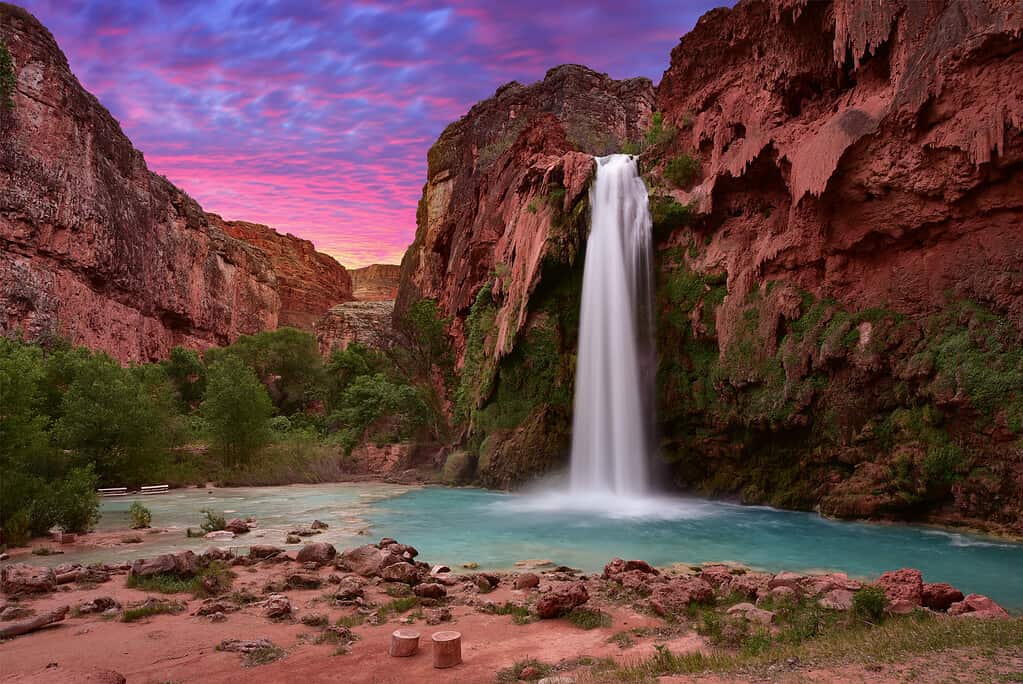
The beautiful Havasu Falls can be found in the Grand Canyon National Park.
©LaserLens/iStock via Getty Images
Third on our list of reasons why the Grand Canyon National Park is the best national park in the United States considers its expansive cultural and historical significance. The vast, breathtaking landscapes of the park hold within their ancient rock layers stories of indigenous peoples and the enduring spirit of human connection to the land.
Indigenous People
For many centuries, the Grand Canyon has been a place of profound importance for many indigenous people. There are 11 contemporary Native American tribes that have links to this land. In addition to protecting its natural landscapes, the Grand Canyon National Park also preserves and protects the human history and culture found within the park. Multiple indigenous communities have called these lands home, weaving their traditions, stories, and spirituality into the very fabric of the land’s existence. The park is a living museum of their cultures. It has petroglyphs, artifacts, and sacred sites that offer a glimpse into their deep connection to the land and their history.
Settlers
The Grand Canyon also played a pivotal role in the exploration and settlement of the American West. In the 17th century, Spanish settlers and later European settlers began exploring the lands here. Around the 1800s, miners moved in, finding cooper, and later, with the development of roads, buildings, and transportation in this region, tourism took root.
Conservation
The construction of the Grand Canyon Railway in the early 20th century further enhanced accessibility, marking a turning point in the park’s history. It facilitated the influx of visitors, transforming the Grand Canyon into a symbol of natural wonder. The establishment of the Grand Canyon as a national park in 1919 solidified its status as a protected area of immeasurable value, safeguarding its cultural, historical, and natural heritage.
The Grand Canyon National Park’s cultural and historical significance enriches its status as one of the best national parks in the United States. Its sacred importance to indigenous people and its role in conserving natural lands converge, spanning thousands of years of human connection with the land.
4. Educational Opportunities
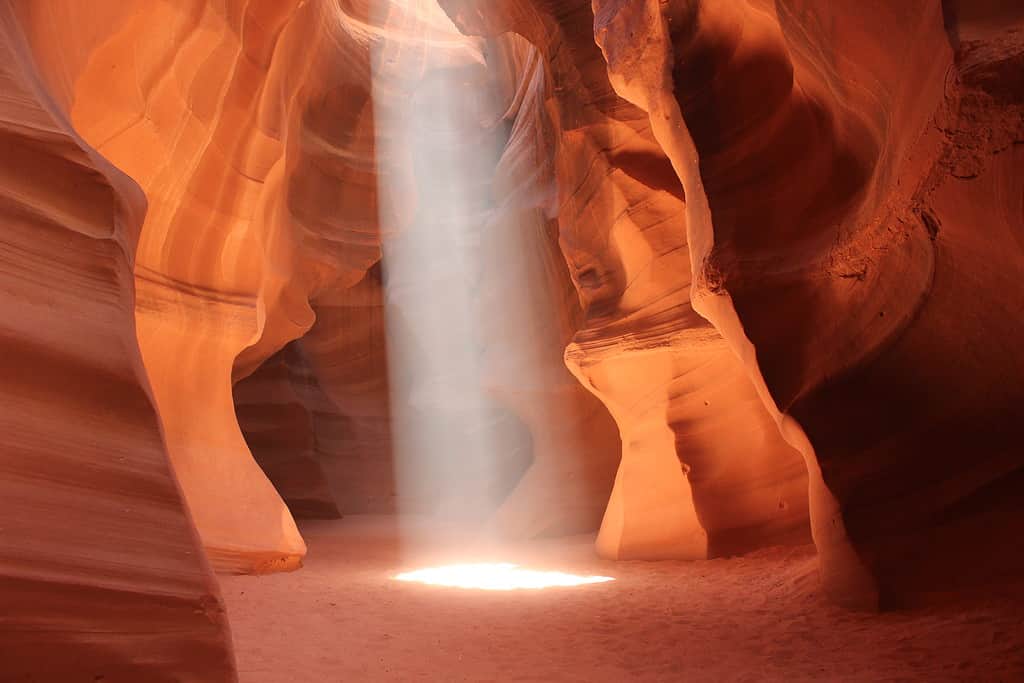
Slot canyons in the Grand Canyon National Park are otherwordly.
©AJ1217/iStock via Getty Images
Fourth on our list of reasons why the Grand Canyon National Park is one of the best National Parks in the United States is its abundant educational opportunities, beckoning explorers, students, and curious minds alike. This awe-inspiring natural wonder is more than merely a visual spectacle. It is also an outdoor classroom brimming with geological, ecological, and historical lessons that enrich our understanding of the Earth and humanity in this region. Across the national park’s guides and rangers, interpretive programs, events, and more, educational opportunities are bursting at this national park.
Geology
Those interested in the park’s geology find themselves in a geological wonderland, where billions of years of Earth’s history are laid bare in the vibrant rock layers. As if turning the pages of a geologic textbook, visitors traverse through time, deciphering the story of continental collisions, ancient oceans, and the slow progression of erosion. The park’s layers hold secrets of Earth’s evolution, acting as an open book.
Ecology
The educational value extends to ecology, as the canyon’s diverse ecosystems offer a unique platform to explore the interconnectedness of life. Whether it’s the adaptations of plants to the harsh desert environment, the behaviors of various animals, or the migrations of birds, the canyon provides a dynamic laboratory to study the delicate balance of nature. Understanding these intricacies becomes a lesson in stewardship, reinforcing the importance of conservation to sustain these delicate habitats.
Human History
Furthermore, the Grand Canyon serves as a living testament to the interactions between humans and the environment throughout history. The indigenous peoples who have cherished these lands for generations leave behind a cultural legacy, reflecting their harmonious relationship with the Earth. Explorers’ much shorter history shows us the settlers’ insatiable desire for discovery, knowledge, and, at times, exploitation.
The Grand Canyon National Park offers insights into the region’s history, ecosystems, and cultural heritage. It’s a realm where learning becomes an immersive experience, allowing visitors to engage with science, history, and nature firsthand.
5. Recreation Opportunities
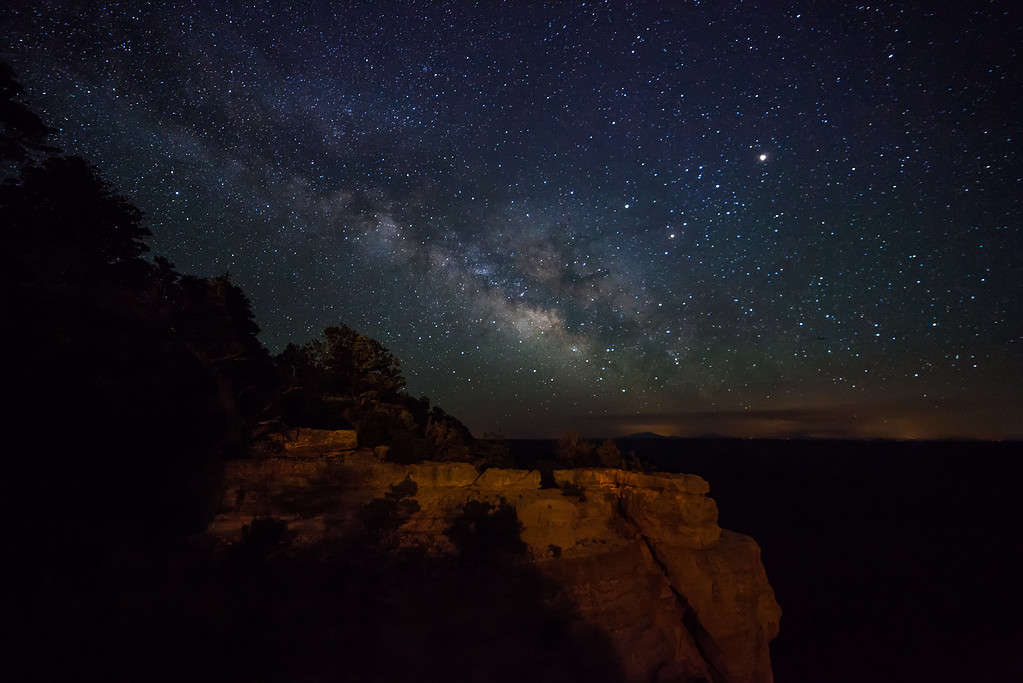
The Grand Canyon National Park is one of the best places in the country to stargaze, thanks to its low light pollution.
©twildlife/iStock via Getty Images
The fifth reason on our list of why the Grand Canyon National Park is one of the best National Parks in the United States is the plentiful recreational opportunities you can experience here. It is a mecca for outdoor enthusiasts seeking unparalleled recreation opportunities amidst nature’s desert landscapes. Its vast expanse of rugged beauty and diverse landscapes offers a playground for adventurers, hikers, climbers, rafters, and nature lovers alike. This makes it an unrivaled national park in the United States.
Hiking and Backpacking
For those who thirst for adventure, the Grand Canyon’s expansive network of trails offers an invitation to explore its depths. Hikers and backpackers are drawn to its trails. Iconic routes include the Bright Angel Trail and the South Kaibab Trail. They wind their way down and around the canyon, revealing breathtaking vistas and rock formations at every turn. Whether tackling a short day hike or embarking on a multi-day backcountry expedition, the challenges of the terrain reward visitors with the thrill of discovery. Other popular trails of various lengths and difficulty include the Grandview Trail, the Widforss Trail, and the Shoshone Point Trail.
Whitewater Rafting
Rafting the mighty Colorado River is a thrilling experience. Especially for those seeking a different perspective of the Grand Canyon’s awe-inspiring natural features. The river’s rapids, ranging from mild to heart-pounding, provide an adrenaline rush for whitewater rafting enthusiasts. Along the journey, explorers witness views of towering cliffs and hidden caves. In addition to the unique geology that defines the canyon’s character.
Stargazing
The Grand Canyon’s night skies are a canvas of celestial wonders, making it an ideal destination for stargazing. With limited light pollution, the park is designated as an International Dark Sky Park by The International Dark Sky Association. It offers visitors the chance to witness the Milky Way and other cosmic phenomena in all their glory. Astronomy programs and guided night sky talks enhance the experience, making it an educational adventure under the stars.
Climbing
Within the sprawling embrace of the Grand Canyon National Park, an arena of adventure and challenge awaits climbers. From sport climbs, trad routes, and bouldering problems, the Grand Canyon National Park has climbing opportunities for all skill levels and specialties. Its sheer cliffs and intricate rock formations offer a unique terrain for climbers. It offers an invigorating test of skill with the breathtaking grandeur of the landscape. Climbers can enjoy bouldering, where impressive rocks provide an engaging experience. They can also venture into the canyons and up rock formations, harnessing their abilities against the backdrop of the canyon’s striking vistas.
Furthermore, climbing within the Grand Canyon is a venture that demands respect for the environment. It also requires meticulous preparation and adherence to stringent regulations. This is to ensure the preservation of the park’s delicate ecosystems and historical significance. In addition to the safety of climbers. The blend of technical challenge, panoramic views, and engagement with the canyon’s geological marvels establishes climbing as an exceptional and unique facet of the Grand Canyon National Park’s recreational offerings.
Art
Artists also find abundance and opportunity amongst nature here. Photographers, painters, dancers, sculptors, and other specialties are drawn to this park. The play of light and shadow on the canyon walls to the wildlife that call this terrain home breath inspiration. The constantly changing interplay of sunlight and weather creates an ever-shifting canvas that invites creativity.
Overall, the Grand Canyon National Park is a haven for outdoor recreation. It offers many activities that cater to adventure seekers and nature lovers.
6. Accessibility and Visitor Amenities
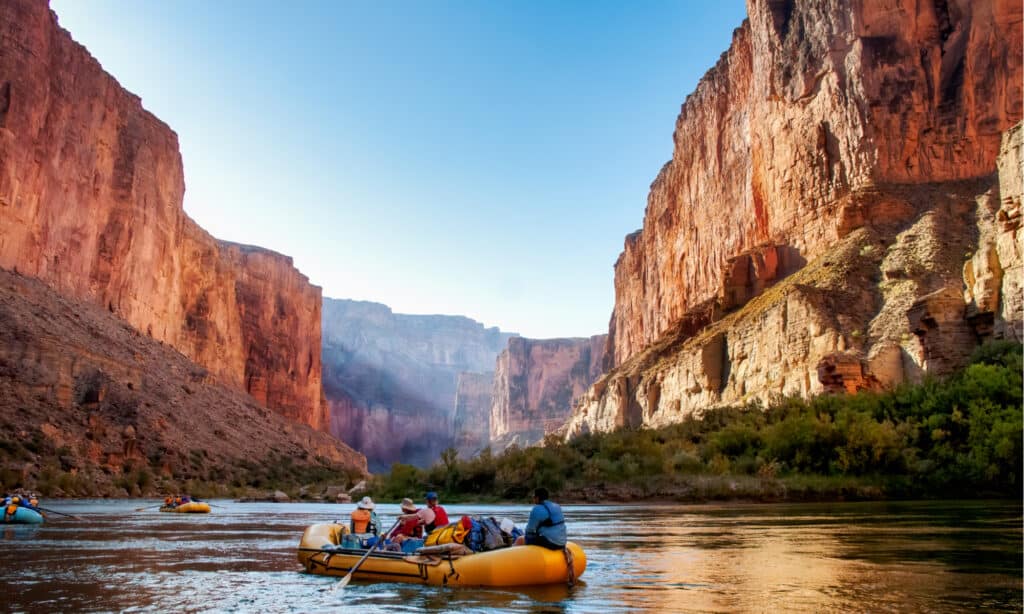
Whitewater rafting is a popular recreational activity to enjoy in the Grand Canyon National Park.
©Jim Mallouk/Shutterstock.com
The sixth reason the Grand Canyon National Park is one of the best national parks in the United States is its accessibility and visitor amenities. It is a popular and reputable destination for those seeking an enriching outdoor experience. All with the convenience of amenities in specific areas.
Visitors experience well-maintained roads, various parking locations, and strategically placed overlooks that provide stunning vistas without compromising the canyon’s natural beauty. The park’s South Rim offers a range of accessible viewpoints. Here visitors of all abilities can marvel at the breathtaking expanse without barriers. Moreover, shuttle services operate to mitigate congestion, allowing for efficient transportation while reducing the environmental impact.
Grand Canyon National Park also boasts a diverse array of visitor amenities that cater to various needs. There are buildings and shelters around the specific popular nature areas. Bathrooms, trash bins, and picnic tables are scattered around the frequented locations near parking areas. Lodging options, from historic lodges to modern accommodations, offer a comfortable retreat after a day of adventure. The opportunity to dine within the park’s restaurants and cafes ensures that visitors can savor the panoramic views and culinary delights within the same day or even span of hours.
The park’s commitment to education and engagement is evident in its visitor centers. Here interactive exhibits, ranger-led programs, and educational materials unravel the canyon’s geology, ecology, and cultural heritage mysteries. These resources empower visitors to delve deeper into their surroundings, fostering a sense of connection, understanding, and respect.
Accessibility for All People
Accessibility extends to the park’s commitment to inclusivity, with provisions for those with mobility challenges, including wheelchair-accessible trails and facilities. Interpretive programs tailored to children inspire the next generation of conservationists. At the same time, resources for educators ensure that learning extends beyond the park’s boundaries.
The Grand Canyon National Park’s dedication to accessibility and visitor amenities sets a benchmark for national parks. They ensure that all can experience its wonders without compromising its natural integrity.
7. Conservation and Sustainability Efforts

The Grand Canyon National Park experiences dramatic sunrises and sunsets.
©Craig Zerbe/iStock via Getty Images
The Grand Canyon National Park in Arizona also shines as one of the best national parks due to its conservation and sustainability efforts. It has a steadfast commitment to preserving its ecological diversity and natural splendor. The park has emerged as a role model for effective environmental stewardship.
The park’s conservation initiatives are rooted in scientific research. They collaborate with experts to monitor and protect the delicate balance of its ecosystems. Various entities make rigorous efforts dedicated to safeguarding threatened and endangered species. Such species include the California condor and humpback chub. All of which showcases the park’s dedication to preserving biodiversity.
Sustainability resonates through the park’s practices, as it prioritizes minimizing its carbon footprint. Shuttle services reduce vehicular congestion and emissions. Meanwhile, renewable energy sources power facilities. The Grand Canyon exemplifies an environmentally conscious approach to hosting millions of visitors annually.
The park’s commitment extends to waste reduction, emphasizing recycling, composting, and reducing single-use plastics. Educational programs and signage enlighten visitors about Leave No Trace principles, instilling responsibility to protect the park’s fragile ecosystems.
Overall, the Grand Canyon National Park’s existence is to safeguard its history and natural resources. Its dedication to ecological preservation and harmonious coexistence with the environment cements its status of responsible stewardship.
8. Memorable Experiences
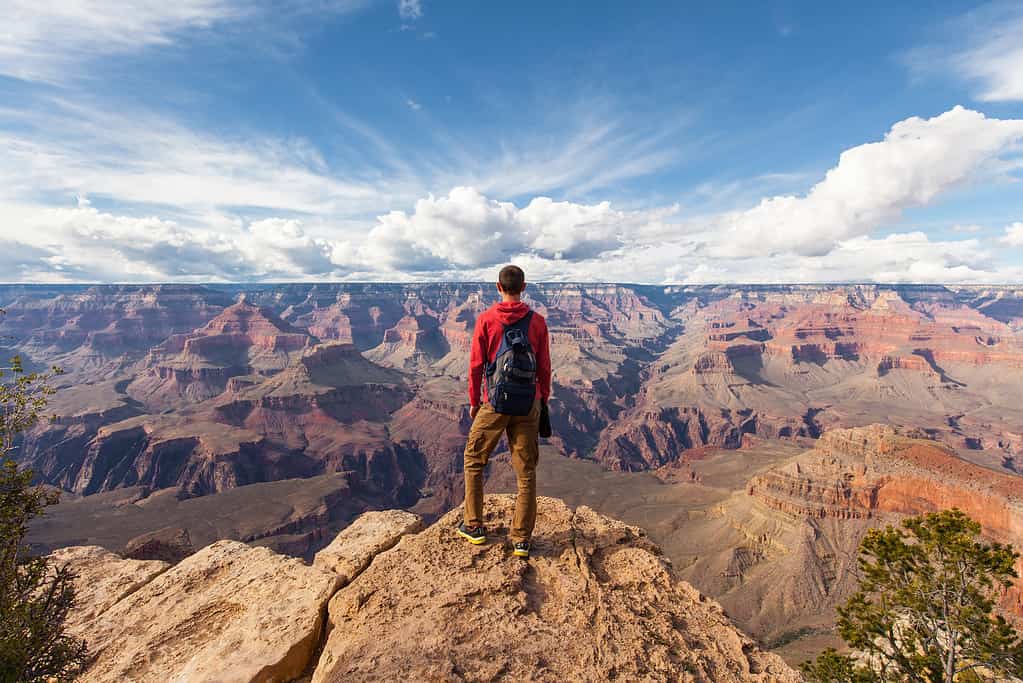
People of all abilities can enjoy the Grand Canyon National Park.
©Nikolas_jkd/iStock via Getty Images
Last on our list of reasons why the Grand Canyon National Park is one of the best national parks in the United States is the memorable experience to be had here. From standing on the precipice of the one-of-a-kind Grand Canyon to witnessing the sun’s golden embrace upon the ancient rock layers and embarking on epic hikes that unveil hidden treasures, the Grand Canyon National Park orchestrates unforgettable moments that linger for a lifetime. Whether a solo adventure or with friends and family, this park welcomes all to make memories amongst the grand landscape.
Sunrise and sunset over the canyon’s expanse paint the skies with some of the most breathtaking hues in the country. That which creates an ephemeral masterpiece that artists strive to embody. The shifting play of light and shadow on the canyon walls imparts a sense of timelessness. It evokes awe and reverence for the Earth.
Embarking on the park’s trails unveils a tapestry of wonders, where each step reveals new vistas and revelations. As the trails wind through the diverse ecosystems, hikers are enveloped by nature’s symphony. This leaves them with an intimate connection to the landscapes and the stories they tell.
Conclusion
In conclusion, Grand Canyon National Park is an unparalleled reservoir of memories waiting to be created. Its dramatic landscapes, numerous recreational activities, captivating features and wildlife, impressive history, immersive educational opportunities, assessable locations, and expansive secluded opportunities all of these reasons intertwine to form an orchestra of experiences that resonate with each visitor, leaving an indelible impression.
Summary of the Top 8 Reasons the Grand Canyon Is the Best National Park in the U.S.
| Number | Reasons |
|---|---|
| 1 | Unique Natural Features and Landscapes |
| 2 | Abundance of Wildlife |
| 3 | Cultural and Historical Significance |
| 4 | Educational Opportunities |
| 5 | Recreation Opportunities |
| 6 | Accessibility and Visitor Amenities |
| 7 | Conservation and Sustainability Efforts |
| 8 | Memorable Experiences |
The photo featured at the top of this post is © Craig Zerbe/iStock via Getty Images
Thank you for reading! Have some feedback for us? Contact the AZ Animals editorial team.




